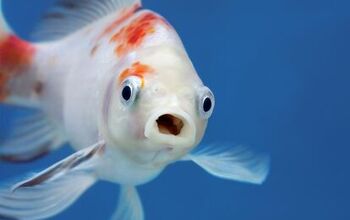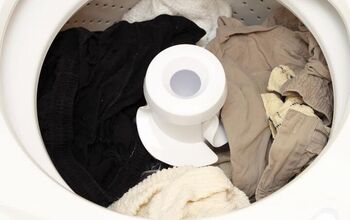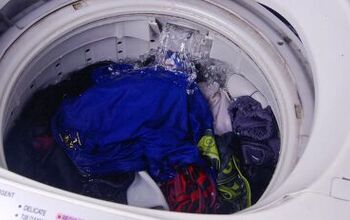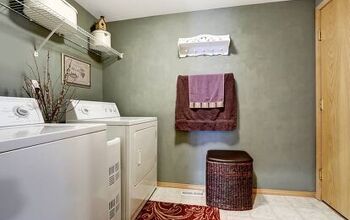Whirlpool Washer Won't Agitate, Spin, Or Drain? (Fix It Now!)

The last thing you expect when taking laundry out of the washer is dirty, soaking wet clothes. However, if your Whirlpool washer won’t agitate, spin, or drain, that’s exactly what you get. Instead of damp, clean clothes ready for the dryer, you end up with a washer tub full of water.
If your Whirlpool washer is not agitating, spinning, or draining, there are several potential causes. There could be a clogged hose or pump, a defective lid switch, a broken drive motor, a busted belt, or bad transmission. If you’re really lucky, you might just need to reset a tripped breaker.
Since not cleaning your clothes adequately pretty much renders your washing machine useless, it’s essential to pinpoint the issue ASAP. While you can handle some problems yourself, a professional might be a better choice for others. Either way, you can at least start troubleshooting to narrow down your options.
Diagnosing the Problem with Your Whirlpool Washer
Depending on your model, your Whirlpool washer could have an electrical issue, computer malfunction, or a mechanical failure. There are several possibilities, so going through some basic troubleshooting is a good starting point.
First things first, start with the simple solutions. Unplug your washing machine, flip the breaker, then plug in the washer and restart the cycle. This could potentially solve the issue since you might have just tripped a breaker when washing clothes.
It also performs a master reset on your machine, which sometimes might be all you need to fix the issue. It’s kind of like when you have a problem with your computer. Often, the first thing the tech tells you to do is to restart it; problem solved. If that doesn’t work, then it’s time to move on to the next possibilities. Before jumping into the process, it’s best to get prepared.
Therefore, start by gathering the supplies you’ll need for the various steps, so you’ll have everything you need within reach. Plus, it’s highly recommended to read through all of the possibilities before starting your inspection.
Tools You Need for the Job:
- Bucket
- Towel
- Gloves
- Wet-Vac (Shop-Vac) with hose attachment
- Plumber’s snake
- Wrench
- Screwdriver
- Multimeter
- A buddy/extra pair of hands
Check Your Whirlpool Washer for Clogs
It’s worth checking for any clogs first. If your washer tub doesn’t drain, then it won’t spin. Although a clog may or may not affect your machine’s agitation, it’s still worth ruling out the possibility.
Step One: Check the Drain Hose
Power off your machine and unplug it. Disconnect the drain hose from the standpipe, checking for clogs in the hose’s end (lint could be blocking water flow). Place the drain hose in the bucket to see if gravity drains any water from the tub.
Step Two: Check the House Drain
If water flows into the bucket easily, then there could be a clog in the standpipe or house drain. Use the plumber’s snake to try and clear the pipe.
Step Three: Empty the Washer’s Tub
If no water comes out of the drain hose into the bucket, your washer’s drain system could be the issue. You need to empty the tub so you can inspect things more closely. Use the wet-vac to get the water out of the machine. If there is a lot of water, use the bucket first to scoop out as much as you can.
Step Four: Check for Other Potential Clogs
Once the tub is empty, detach the drain hose from the back of the machine, and check for any clogs. Use an attachment on your wet-vac to try and suck out any clogs from inside the hose. If everything seems clear, it’s time to move on to checking the drain pump.
Check Your Whirlpool Washer’s Drain Pump
When using your machine, there is a possibility that small things could obstruct the drain pump. Items like socks and other things can end up lodged between the pump and the washer’s tub.
Step One: Tilt the Machine to See the Pump
With the tub empty, shut off the water valves and detach the fill hoses from the back of the machine. Have a friend help you lay down the washing machine or lean it up against a wall. This positioning is so you can get a look at the drain pump.
Step Two: Remove the Pump
Disconnect the hose and use a screwdriver to remove the screws so that you can remove the drain pump. If any items are causing an obstruction, remove them, then put the pump back into position.
If you found no clogs or obstructions and gravity pulls water from the tub, the drain pump could be bad. While a new pump costs only $25 to $45, it can be a tricky repair. Using a professional can cost anywhere from $200 to $400 or more.
But, there are a few other things you can check first.
Check Your Whirlpool Washer’s Lid Switch
A lid switch makes sure that your washing machine is completely closed before it can agitate or spin. If your machine isn’t doing anything, then a defective lid switch could be to blame. Since this is a safety feature, it’s often not recommended to bypass a lid switch, although it can be done. Instead, it’s best to run a few tests and replace the switch if necessary.
Before you test for any electrical issues with the switch, check for mechanical defects. It could be the striker, the piece on the lid that presses on the switch when you close the lid. Ensure that it aligns with the switch correctly and also that nothing is blocking the striker or switch.
If the switch appears fine, test it for continuity using a multimeter. You should get a reading of infinity. Then, when you press the lid switch, the reading should change to 0. If the switch fails these tests or is damaged, you need to replace it. You can get a replacement switch for about $6 to $11. A professional repair costs about $150.
If the issue is a broken striker on the lid, you can get a new one for about $5 to $10.
Is Your Whirlpool Washer’s Drive Motor or Drive Belt Bad?
If your machine isn’t agitating, spinning, or draining, you could have a bad drive motor. To have a pro replace the motor, you could pay $300 to over $500. However, you can buy a motor for roughly $100 to $300, depending on your machine’s model.
If you want to replace the drive motor yourself, follow these steps.
Tools You Need for the Job:
- Bucket
- Pipe Wrench
- Tape
- 5/16” socket wrench
- 1/2″ socket wrench
- A new motor for your machine model
- A buddy/extra pair of hands
- A camera or phone to take pictures
Step One: Disconnect Your Machine from All Power and Water Sources
Power off and unplug your washer. Turn off the water valves and disconnect the fill hoses from the back of the machine. Place the ends of the fill hoses in the bucket to catch any water inside the hoses.
Note: Take pictures as you go, as you’ll perform these steps in reverse later to install the new motor.
Step Two: Detach the Drain Hose and Secure the Lid
Release the retaining clamp and disconnect the drain hose from your machine. Then, use the tape to secure the machine’s lid so it stays shut.
Step Three: Access the Whirlpool Washer’s Drive Motor and Drive Belt
Tilt the machine and lay it down on its back; use a buddy for safety. Use the 5/16” socket wrench to remove the screws attaching the belt guard. Then disconnect the drive motor wire connector and drive belt.
Note: This is a good time to inspect the drive belt. The belt may be busted or worn out, and you can simply replace it. A new drive belt costs between $5 and $15.
Step Four: Replace the Drive Motor
Remove the old motor using the 1/2” socket wrench to unscrew the motor mounting screws. Finally, follow all of the above steps in reverse to install the new motor and rerun your machine.
Does Your Whirlpool Washer Have a Bad Transmission?
If none of the above issues seems to be the culprit, you might be looking at a bad transmission. This is a costly repair, even if you attempt it yourself. A new transmission can run between $200 to over $400 or more, depending on your machine.
If you opt to have a professional do the job, it can potentially top $700. Most pros will recommend getting a new machine at this point. Typically, if a repair costs 50% or more than a new machine, it’s best to buy a new washer.
Related Questions
What are some other potential causes of a washing machine that won’t agitate, spin, or drain?
In some cases, depending on your machine’s make and model, there could be issues with the computer or actuator. The actuator, or shifter, is the part that typically signals to your washer to start the spin and drain cycles. Although, this wouldn’t necessarily explain why your machine is not agitating either.In other situations, the washing machine’s computer could be malfunctioning or sending faulty codes to the motor. Sometimes, this can happen from something as simple as an unbalanced load. So, if you’re washing bulky items or have a super load in the wash, try moving things around a bit. If, after adjusting or removing garments, you still have an issue, then you’ll at least have ruled out another possibility.
How much does a new washing machine cost?
If your washer’s facing some significant repairs, like a bad transmission, then you might be shopping for a new machine. Of course, prices vary broadly based on brand and model and how simple or fancy you want your new appliance. However, a new washing machine costs between $500 to $1500 or more, with an average price of about $750.
Related Articles

Stacy Randall is a wife, mother, and freelance writer from NOLA that has always had a love for DIY projects, home organization, and making spaces beautiful. Together with her husband, she has been spending the last several years lovingly renovating her grandparent's former home, making it their own and learning a lot about life along the way.
More by Stacy Randall



























